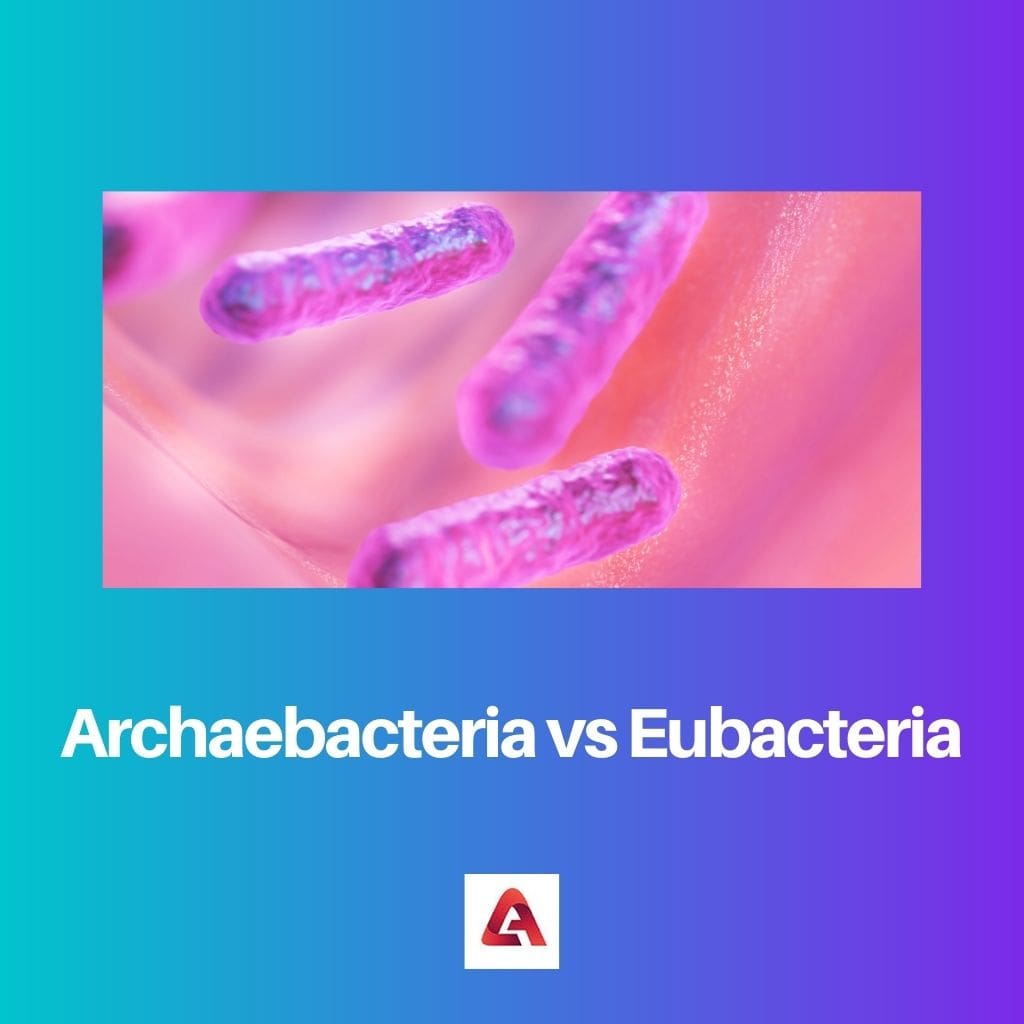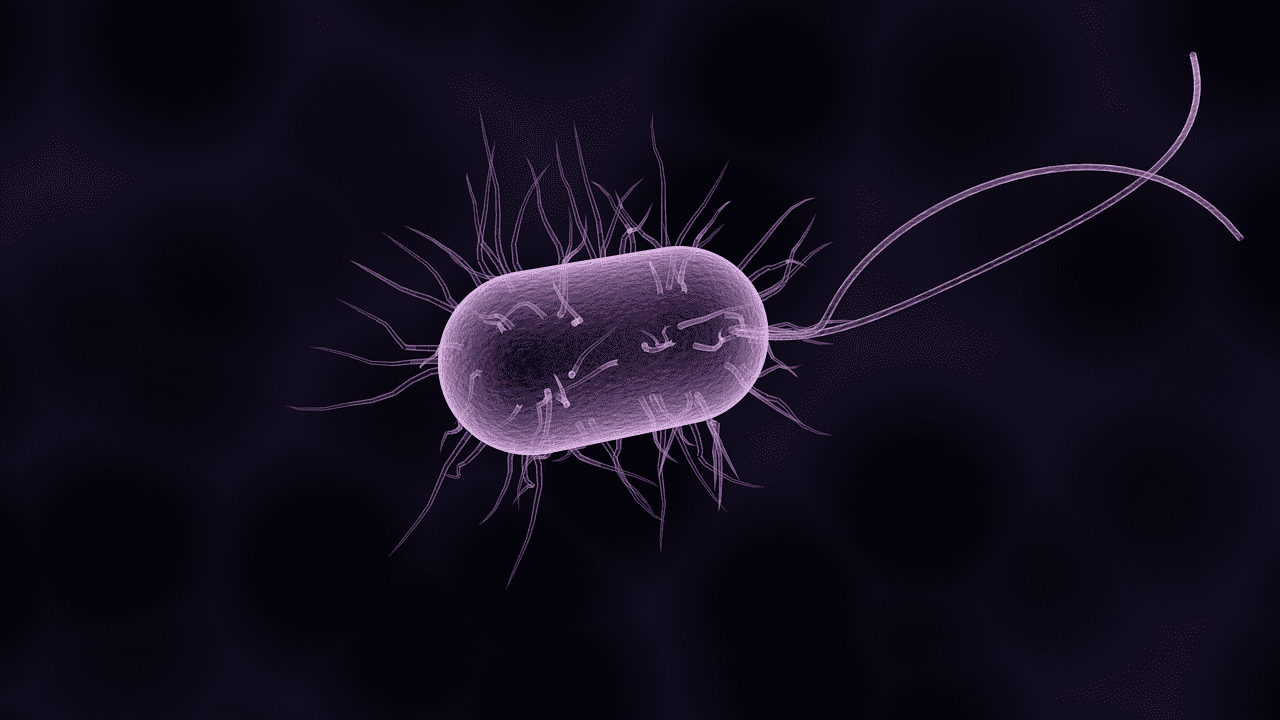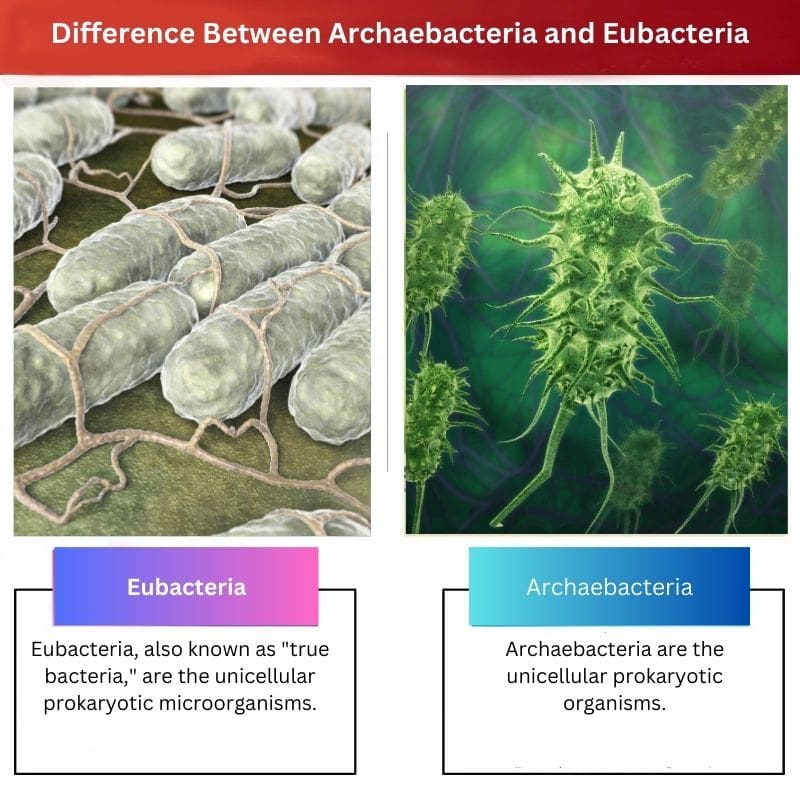Archaebacteria, distinct for their ability to thrive in extreme environments like hot springs and deep-sea vents, exhibit unique genetic and biochemical traits akin to both bacteria and eukaryotes. In contrast, Eubacteria, encompassing diverse forms from common pathogens to beneficial symbionts, primarily inhabit moderate environments and are more closely related to typical bacteria, showcasing diverse metabolic capabilities crucial for ecological balance.
Key Takeaways
- Archaebacteria are known for their ability to live in extreme environments such as hot springs, while Eubacteria are commonly found in soil, water, and living organisms.
- Archaebacteria have unique cell walls that lack peptidoglycan, while Eubacteria have cell walls containing peptidoglycan.
- Archaebacteria play an essential role in the carbon and nitrogen cycles, while Eubacteria significantly impact human health and the environment.
Archaebacteria vs. Eubacteria
Archaebacteria, or Archaea, are single-celled microorganisms distinct from bacteria and eukaryotes. They thrive in extreme environments such as hot springs, salty lakes, and deep-sea vents. Eubacteria, or bacteria, are single-celled microorganisms, found almost everywhere on Earth in plenty of shapes and sizes.

Eubacteria, also known as “true bacteria,” are unicellular prokaryotic microorganisms in many different areas worldwide. They lack a membrane-bound nucleus, and their cell wall comprises peptidoglycans in a cross-linked chain pattern.
This structure helps them to maintain their shape and size. There are three types of eubacteria. They have various characteristics. Archaebacteria, or the “ancient bacteria,” are also unicellular prokaryotic microorganisms.
They are found in ocean depths. They are capable of surviving in extreme environmental conditions. Archaebacteria are considered to be the modern form of some of the oldest bacteria found on Earth.
Comparison Table
| Feature | Archaebacteria | Eubacteria |
|---|---|---|
| Domain | Archaea | Bacteria |
| Other Name | Ancient bacteria | True bacteria |
| Habitat | Extreme environments (hot springs, salty marshes, etc.) | Diverse environments (soil, water, inside organisms) |
| Cell Wall | Pseudopeptidoglycan | Peptidoglycan (with muramic acid) |
| Membrane Lipids | Ether-linked, branched chains | Ester-linked, straight chains |
| Reproduction | Binary fission, fragmentation, budding | Binary fission, conjugation, transformation, transduction |
| Examples | Methanogens, Halophiles, Thermophiles | E. coli, Salmonella, Lactobacillus |
| Note | More complex than true bacteria | More diverse than archaebacteria |
What is Eubacteria?
Eubacteria, also known simply as bacteria, are one of the two major domains of prokaryotic microorganisms, alongside Archaea. They are ubiquitous and diverse, inhabiting a wide range of environments on Earth, from soil to water to the human body. Eubacteria play crucial roles in various ecosystems, serving as decomposers, producers, and symbiotic partners, and they have significant impacts on human health, agriculture, and industry.
Characteristics of Eubacteria
- Cellular Structure: Eubacteria are characterized by their prokaryotic cellular organization, lacking a true nucleus and membrane-bound organelles. Their genetic material is organized in a single, circular chromosome located in the nucleoid region.
- Cell Wall Composition: The cell walls of eubacteria contain peptidoglycan, a unique polymer that provides structural support and protection against osmotic pressure. This distinguishes them from Archaea, which lack peptidoglycan in their cell walls.
- Metabolic Diversity: Eubacteria exhibit remarkable metabolic diversity, enabling them to utilize various energy sources and thrive in diverse environments. They can be aerobic, requiring oxygen for respiration, or anaerobic, capable of surviving in oxygen-deprived conditions.
- Reproduction: Eubacteria reproduce asexually through binary fission, where a single cell divides into two identical daughter cells. Some species may also exchange genetic material through horizontal gene transfer mechanisms like conjugation, transformation, or transduction.
- Ecological Roles: Eubacteria fulfill essential ecological functions, such as nutrient cycling, nitrogen fixation, and decomposition. They form mutualistic relationships with plants, animals, and other organisms, contributing to nutrient uptake, disease resistance, and overall ecosystem stability.
Classification of Eubacteria
- Proteobacteria: This diverse phylum encompasses many pathogenic and symbiotic bacteria, including Escherichia coli, Salmonella, and Helicobacter pylori.
- Firmicutes: Firmicutes include both beneficial bacteria, like Lactobacillus, and pathogenic species such as Staphylococcus aureus and Clostridium difficile.
- Actinobacteria: Actinobacteria are known for their filamentous growth and include important genera like Streptomyces, known for producing antibiotics, and Mycobacterium, which includes the causative agents of tuberculosis and leprosy.

What is Archaebacteria?
Archaebacteria, referred to as Archaea, constitute one of the three domains of life, alongside Bacteria and Eukarya. Initially thought to be similar to bacteria due to their prokaryotic cellular organization, recent molecular and biochemical studies have revealed that Archaea represent a distinct evolutionary lineage with unique genetic, physiological, and ecological characteristics. Archaebacteria are known for their ability to thrive in extreme environments and play significant roles in various ecosystems.
Characteristics of Archaebacteria
- Cellular Structure: Archaebacteria are prokaryotic microorganisms with cellular structures similar to bacteria, lacking a true nucleus and membrane-bound organelles. However, they exhibit unique features in their cell membranes and cell walls that distinguish them from both bacteria and eukaryotes.
- Cell Membrane Composition: Unlike bacteria and eukaryotes, the cell membranes of Archaebacteria are composed of ether-linked lipids and branched hydrocarbon chains. These unique lipid compositions enable them to withstand extreme temperatures and pH levels, contributing to their ability to inhabit harsh environments.
- Cell Wall Composition: While some Archaebacteria possess cell walls, they lack peptidoglycan, a key component of bacterial cell walls. Instead, their cell walls may contain other substances such as pseudopeptidoglycan or proteinaceous S-layers.
- Metabolic Diversity: Archaebacteria exhibit diverse metabolic pathways, enabling them to utilize various energy sources, including organic compounds, light, and inorganic substances such as hydrogen, sulfur, and methane. Some Archaebacteria are extremophiles, thriving in environments with extreme temperatures, salinity, acidity, or pressure.
- Genetic and Molecular Features: Molecular analyses have revealed that Archaebacteria exhibit genetic and molecular characteristics distinct from both bacteria and eukaryotes. Their transcription and translation machinery, as well as their DNA replication mechanisms, show similarities to eukaryotes in some aspects.
Classification of Archaebacteria
- Euryarchaeota: This phylum includes methanogens, which produce methane as a metabolic byproduct, as well as halophiles, which thrive in high-salt environments, and thermophiles, which inhabit high-temperature habitats.
- Crenarchaeota: Crenarchaeota encompass thermophilic and acidophilic organisms found in hot springs, volcanic environments, and acidic soils. Many crenarchaeotes are capable of sulfur metabolism and are involved in sulfur cycling in ecosystems.
- Korarchaeota: Korarchaeota are a relatively less studied group of Archaebacteria found in geothermal environments, representing a deep-branching lineage within the Archaea domain.

Main Differences Between Eubacteria and Archaebacteria
- Cell Wall Composition:
- Eubacteria have cell walls made of peptidoglycan.
- Archaebacteria have cell walls made of different materials such as pseudopeptidoglycan or proteins, lacking peptidoglycan.
- Membrane Lipids:
- Eubacteria have membrane lipids composed of fatty acids bound to glycerol by ester linkages.
- Archaebacteria have membrane lipids composed of branched hydrocarbon chains bound to glycerol by ether linkages.
- Membrane Composition:
- Eubacteria have membrane lipids with a bilayer structure.
- Archaebacteria have membrane lipids with a monolayer structure, making them more stable in extreme environments.
- RNA Polymerase:
- Eubacteria have one type of RNA polymerase.
- Archaebacteria have multiple types of RNA polymerase, similar to eukaryotes.
- Gene Expression:
- Eubacteria have operons for gene expression regulation.
- Archaebacteria have different mechanisms for gene expression regulation compared to eubacteria.
- Metabolic Pathways:
- Eubacteria include diverse metabolic pathways for energy generation, such as fermentation, photosynthesis, and aerobic respiration.
- Archaebacteria thrive in extreme environments and may utilize unique metabolic pathways, such as methanogenesis or chemolithotrophy.
- Ecological Niches:
- Eubacteria inhabit various environments including soil, water, and the human body.
- Archaebacteria are found in extreme environments such as hot springs, salt flats, and deep-sea vents.
- Genetic Relatedness:
- Eubacteria are more closely related to organisms in the domain Eukarya than to Archaebacteria.
- Archaebacteria are considered more ancient and evolutionarily distinct from both Eubacteria and Eukarya.
- Sensitivity to Antibiotics:
- Eubacteria are sensitive to antibiotics commonly used in medicine.
- Archaebacteria lack sensitivity to antibiotics targeting bacterial cell walls due to differences in their cell wall structure.




